I earn commissions if you shop through the links below at no additional cost to you.
Last Updated on February 4, 2025 by Jeremy
Outdoor cooking is more than just a way to prepare food—it’s an experience that connects us to the land, the seasons, and the adventure of being outside. Whether you’re cooking over an open fire at a remote backcountry campsite, preparing a meal in an RV park, or making fresh meals on the road, the joy of cooking outdoors is universal.
For travelers, food isn’t just fuel—it’s an essential part of the journey. The taste of locally sourced ingredients, the scent of a woodfire, the satisfaction of a simple yet nourishing meal—all of it contributes to the experience of travel itself.
As someone who’s spent years camping, traveling, and living nomadically, I’ve cooked in just about every condition—rain, wind, heatwaves, and even unexpected snowstorms. I’ve adapted meals to work with what’s available, whether that’s wild-foraged greens in a Canadian forest or fresh seafood from a Costa Rican market. I’ve learned that outdoor cooking doesn’t have to be complicated or unhealthy—it can be simple, natural, and deeply satisfying.
This guide blends outdoor cooking essentials and recipes with travel and nature-focused insights—so whether you’re setting up a fire pit in the backcountry or grilling at a beachside Airbnb, you’ll find something here to elevate your next meal.
The Essentials of Outdoor Cooking

Cooking in Different Climates: What Travelers Should Know
Outdoor cooking isn’t the same everywhere. Depending on where you’re traveling, different climates present unique challenges and opportunities.
- In Costa Rica’s humid jungle regions, food spoils faster, and moisture can make starting a fire tricky. Choosing fresh, local ingredients that don’t need refrigeration—like tropical fruits and plantains—can make outdoor cooking easier.
- In the Canadian Rockies, colder temperatures mean you’ll need higher-fat foods for energy and proper cookware to distribute heat evenly over an open fire.
- In the desert, like Arizona or Nevada, conserving water is key, so one-pot meals that use minimal liquid (like quinoa bowls or skillet meals) work best.
- In Europe, many parks and campsites have strict fire regulations, so portable stoves are the best option for cooking meals on the go.
Wherever you travel, adapting your outdoor cooking to the local climate is part of the adventure.
Choosing the Right Cooking Equipment for Travel
The key to cooking outdoors while traveling is lightweight, durable, and versatile gear.
- A good portable stove: Essential for international travel, especially in countries with fire restrictions.
- A cast iron skillet: Heavy, but unbeatable for even heat distribution and durability.
- Reusable utensils & plates: Minimize waste and keep your cooking eco-friendly.
- A quality cooler or travel fridge: If you’re RVing or overlanding, investing in a 12V travel fridge can make all the difference.
- Lightweight camping cookware: For backpackers, aluminum nesting pots keep things compact.
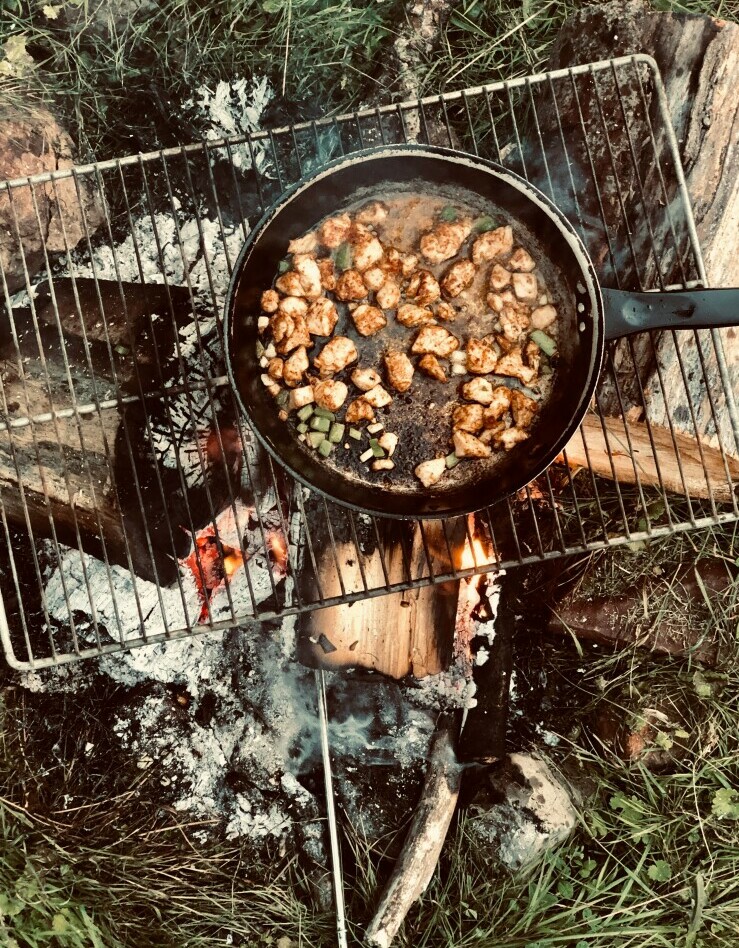
Having the right gear means you can cook anywhere—from a secluded campsite in Canada to an ocean-view balcony in Greece.
Campfire Classics with a Healthy Twist
Grilled Vegetable Skewers with a Local Touch
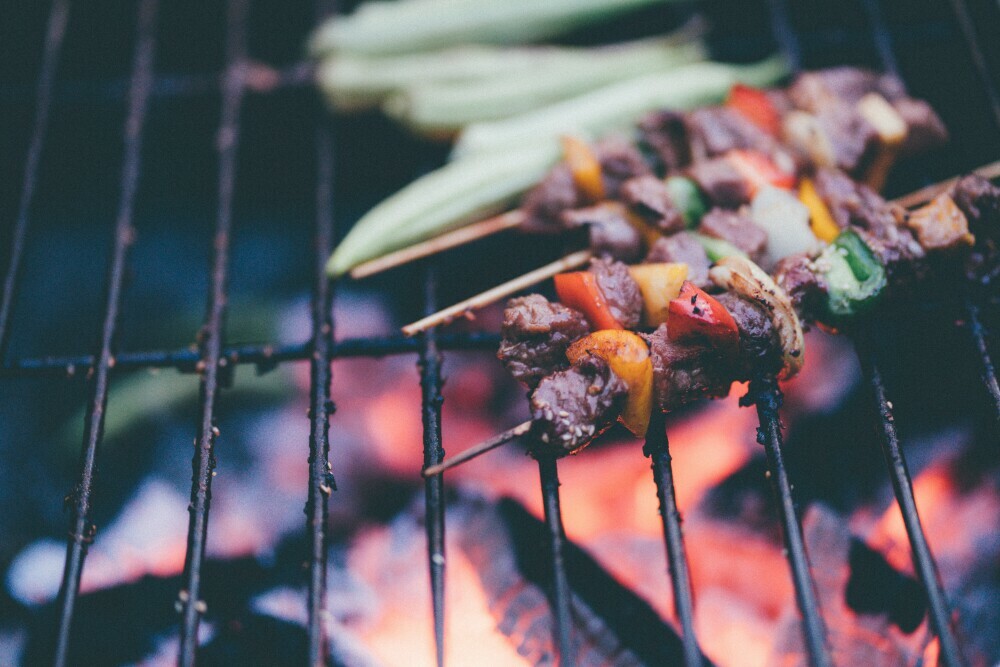
Nothing beats skewers over an open fire. The beauty of this dish? You can adapt it based on where you’re traveling.
- In North America: Use bell peppers, mushrooms, cherry tomatoes, and onions.
- In Costa Rica: Swap in plantains, pineapple, and peppers for a tropical flavor.
- In Europe: Try zucchini, eggplant, and olives with Mediterranean spices.
Recipe:
- 1 red bell pepper, chopped
- 1 zucchini, sliced
- 1 cup cherry tomatoes
- 1 red onion, cut into chunks
- 1 tbsp olive oil
- 1 tsp rosemary (or local herbs)
- Salt & pepper to taste
Directions:
- Skewer the veggies and brush with oil & seasoning.
- Grill over an open flame for 5–7 minutes per side.
- Serve with a yogurt dip or local sauce.
💡 Where to try it: If you’re in Spain, try using local saffron and paprika. In Thailand? Add a touch of chili and lemongrass.
One-Pot Meals for Easy Cleanup While Traveling
Whether you’re camping or road-tripping, one-pot meals save time and reduce waste. Here’s a travel-friendly recipe that’s easy to make anywhere.
One-Pot Quinoa & Black Bean Stew
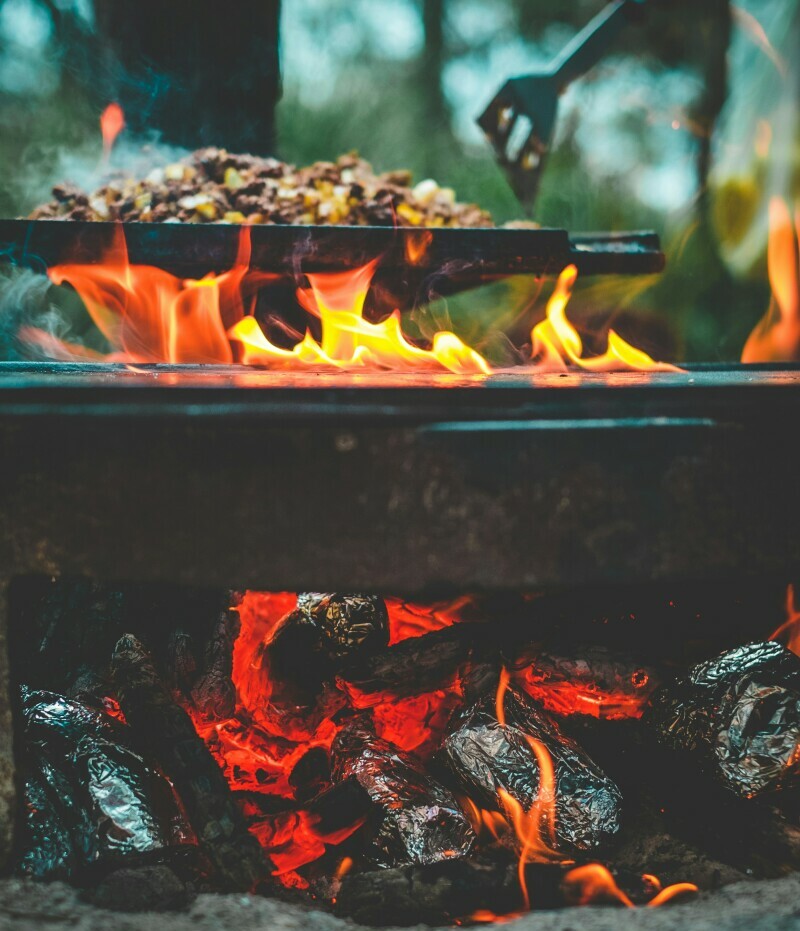
(Great for RVs, campsites, or Airbnb kitchens!)
- 1 cup quinoa
- 1 can black beans (or fresh if available)
- 1 tomato, diced
- 1 bell pepper, chopped
- 1 tsp cumin
- 1 tsp smoked paprika
- 2 cups water or broth
Directions:
- Heat a pan over a medium flame. Add tomatoes and peppers.
- Stir in quinoa, beans, and spices.
- Add broth and let simmer for 15 minutes.
💡 Pair with fresh bread in France, plantain chips in Costa Rica, or tortillas in Mexico!
Wild & Foraged Ingredients: Cooking with What’s Around You
Foraging While Traveling: A Global Perspective
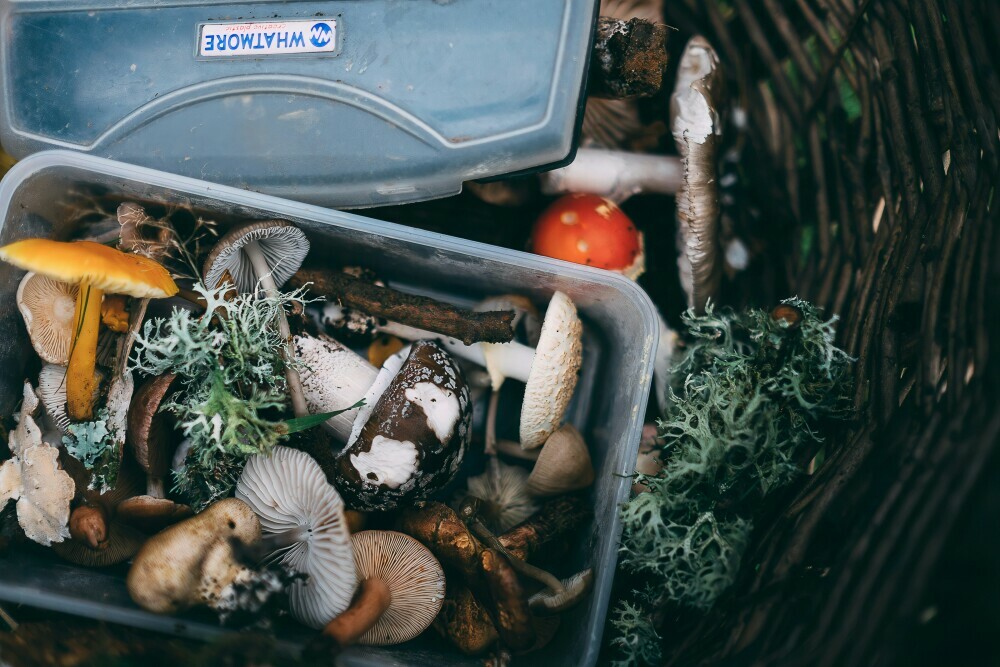
Foraging isn’t just for survivalists—it’s an incredible way to connect with nature and discover local flavors.
- In Canada: Wild blueberries, mushrooms, and dandelion greens are abundant.
- In Costa Rica: Foraged coconuts and heart of palm are commonly used in local dishes.
- In Scandinavia: Lingonberries, nettles, and wild herbs enhance traditional outdoor meals.
💡 Pro Tip: If you’re traveling, join a local foraging tour (Viator offers guided foraging trips in places like Sweden, Alaska, and Japan!).
Eating Seasonally: Travel & Nature Connection
How Seasonal Eating Enhances Your Outdoor Cooking
Eating seasonally while traveling means you’re getting the freshest, most flavorful foods while also supporting local farmers.
- Summer: Fresh berries, corn, tomatoes, and basil (perfect for light, fresh meals).
- Autumn: Pumpkins, apples, and squash (great for hearty stews).
- Winter: Root vegetables, citrus fruits, and preserved goods.
- Spring: Fresh greens, peas, and wild herbs.
💡 Find seasonal produce at local farmers’ markets when traveling. Booking.com and Trivago Canada offer great stays near popular markets, like Borough Market in London or La Boqueria in Barcelona.
Mindful Eating in Nature: The Outdoor Dining Experience
Slow Down & Savor the Moment
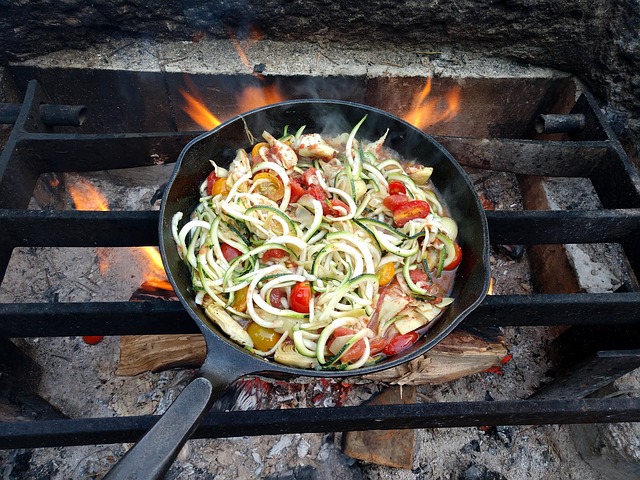
When you’re traveling, eating outdoors isn’t just about food—it’s about the experience.
- Enjoy the local flavors and cultural traditions that come with outdoor meals.
- Take in the sights, sounds, and scents of your surroundings—whether that’s the ocean breeze in Portugal or the scent of pine trees in British Columbia.
- Unplug and be present. Eating outdoors is a chance to reset, reflect, and appreciate where you are.
Conclusion: Bringing Travel & Nature Together Through Food
Wherever you go, food has the power to connect you to nature, to people, and to the experience of travel itself.
🔥 Whether you’re cooking over a campfire in the Yukon, grilling fresh fish in Thailand, or making a quick one-pot meal in your campervan, embracing local flavors and natural ingredients makes every meal an adventure.
So next time you pack your bags, bring your outdoor cooking skills with you. Explore farmers’ markets, cook with local ingredients, and savor the flavors of your journey.
Where’s the best outdoor meal you’ve ever had while traveling? Let’s hear your stories!

Leave a Reply